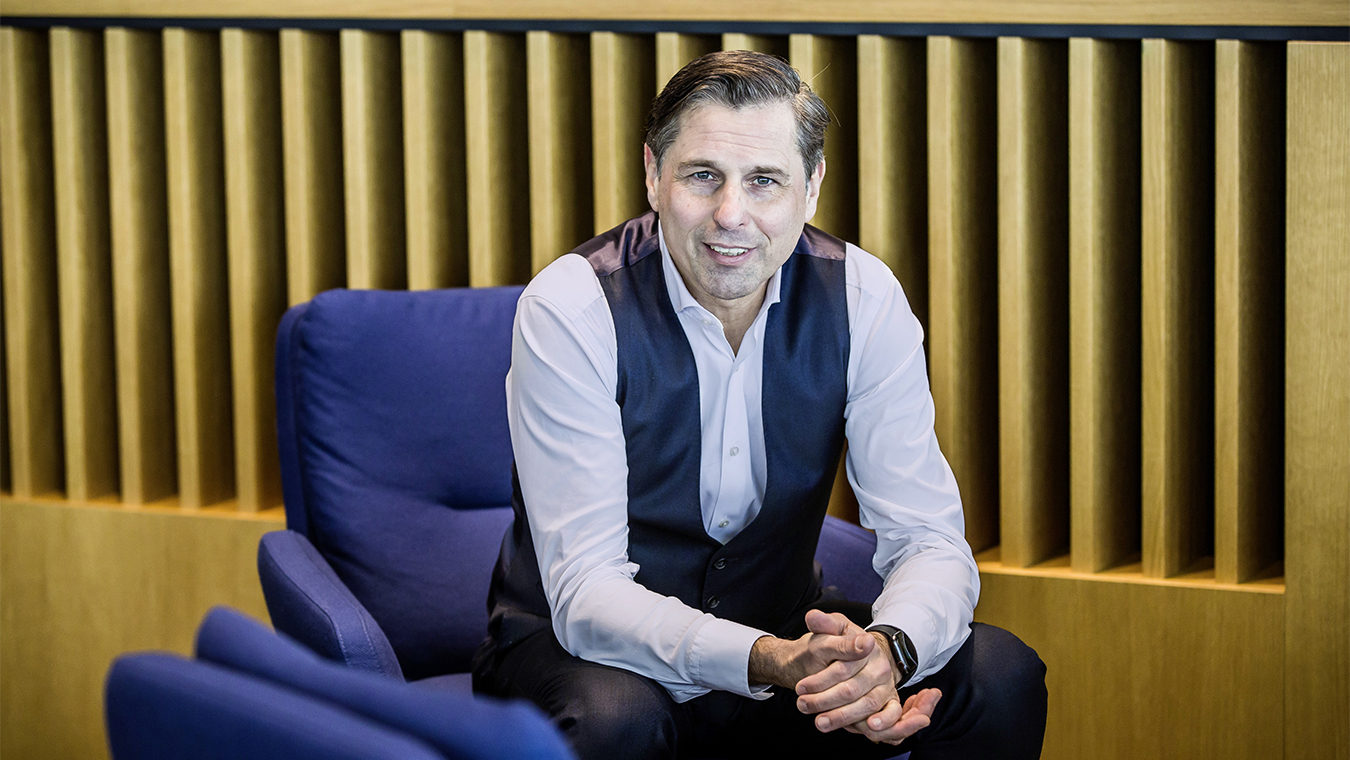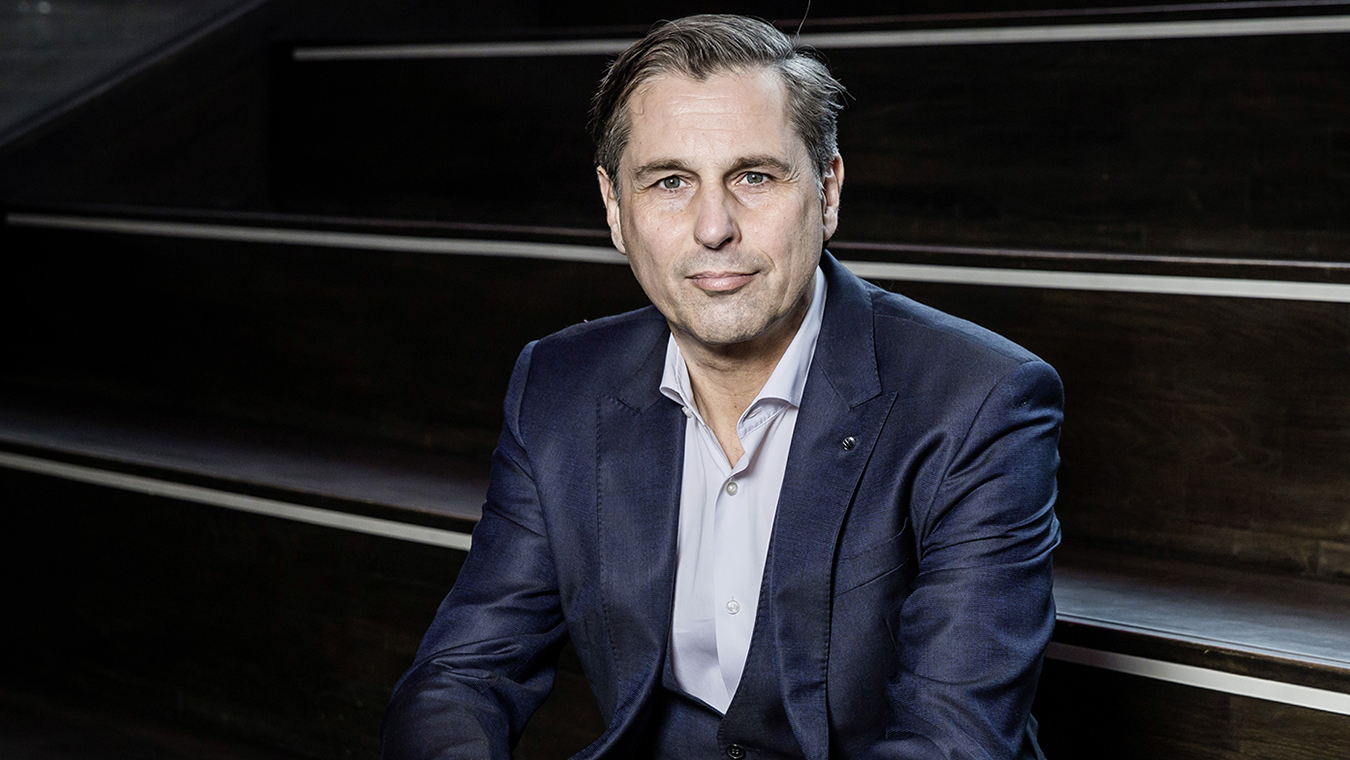"Higher Performance on Demand"
Interview: How Volkswagen Board Member Klaus Zellmer expects to fulfill drivers' wishes in the future.
06/2021

Mr. Zellmer, in 2020 you joined the Board of Management of the Volkswagen Passenger Cars brand, where you are responsible for sales, marketing, and after sales. Did your appointment to the board coincide with a new era in which car manufacturers are having to make so many fundamental changes?
The shift to electric mobility is the biggest transformation in Volkswagen’s history. We want to become the most sought-after brand for sustainable mobility and the leader in battery-powered cars. The Way to Zero convention is our road map for taking comprehensive social responsibility for protecting the climate. In parallel to this, for some time now we’ve been going through a transformation in how we use media. We’re putting enormous energy into digitalizing our customer communications. We want to provide people with the right content in the right place and at the right time. The right way to act in a digital ecosystem is a major factor in the success of our sales. In addition, our business model 2.0 is addressing new target groups, making innovative offers, and streamlining access to individual means of mobility. To add an important note right away, dealerships are and will remain our interface with customers, and we are working very closely together with them. For the vast majority of people, buying a car is an emotional experience that cannot simply be digitalized. Sensory and tactile aspects—touching and test-driving the car—play a very important role.
Will Volkswagen customers still have the experience of personal car ownership? Or will efforts increasingly focus on providing access to the right vehicle at the right time for a specific purpose, for example with car-sharing models?
Yes, that’s precisely the point. As mentioned, we want to make access to individual mobility even easier. So we’re offering an entire range of options, from buying or leasing cars to subscription and share-and-ride services. That’s enabling us to reach and delight many people who are not yet Volkswagen customers. I’m convinced that this is a good instrument for building loyalty to the brand, as well as fostering interest and pleasure in electric mobility. I spent five years in charge of Porsche Cars North America, where our experience with subscription models was very positive. Many of the subscribers had never set foot in a Porsche dealership before, but ended up buying a car because we were able to inspire enthusiasm for the product in connection with a subscription.

A strong brand needs a face. That's why we'll continue to want brick-and-mortar dealerships in the future.
Licensed dealerships have suffered under the Covid pandemic and the retail lockdown. Buyers have become more attuned not only to configuring new cars on websites, but also to ordering them online. What does that mean for dealerships? What will their future look like? What will their main activities consist of?
A strong brand needs a face. That’s why we’ll continue to want brick-and-mortar dealerships in the future. We need customer proximity and a local presence. At the same time, a strong customer orientation means taking account of major changes in customer behavior. Our sales system will therefore be available to customers both online and offline, of course. That’s why we’ve been working with dealerships to build a digital marketplace for vehicles in stock, custom-built, and used cars. This is of considerable benefit to everyone involved, and we view it as a very important way of supporting e-commerce. In concrete terms: as of summer 2021 we’ll have a marketplace at vw.com, where dealers can post their stock of new and used cars on a trans-regional basis—including online leasing and financing with credit ratings. Customers can view a wide range of cars on offer and buy them from the dealerships online. Here, too, we’re quickly working to add online financing and payment options. We’re expecting this approach to help us reach a lot of new internet-savvy customers.
What role will dealership repair services play when electric drives start dominating the market?
First of all, we’re assuming that people will start driving more as the pandemic comes to an end. There’ll be a backlog of repairs and maintenance procedures that were postponed during the lockdown. I also anticipate a greater trend toward taking vacation trips by car. These and similar changes in mobility behavior will generate new opportunities. Over the medium and long term it will be important to work with dealerships to make even better use of existing market conditions.
How will the Volkswagen Passenger Cars brand redefine its customer journeys? What changes will you make in addressing customers?
All kinds of things are changing there too, of course. User behavior had already been changing significantly before the pandemic, but the lockdown had a turbocharging effect on digital marketing. Customer dialogues used to come to an end when cars were purchased. Today, we want and need to accompany our customers beyond that point in time. That’s why we’re working full steam ahead on shifting customer journeys from a linear track to a closed circuit, in order to tailor our offers even better to what they desire. Ninety-five percent of potential buyers are now starting the process by visiting our website. That shows the overwhelming importance of an excellent online presence. It’s where we tell almost all of our customers what Volkswagen stands for, and what products we and our dealerships can offer.
And what is Volkswagen changing?
In order to help customers find what they’re looking for more quickly, we’ve consolidated all our online touchpoints in a single place—OneHub. We’ve rolled it out at high speed in more than 100 markets. Buyers enjoy a great customer experience and need just a few clicks to configure their dream car. In contrast to before, we now want to remain in dialogue with customers after their decision to buy or lease in order to offer not only traditional but also digital services. For example, before they set off on vacation we can offer Travel Assist or additional battery power on demand for long-distance travel. We want and need to get these and other benefits across to our customers. Over the coming years we’re expecting these digital auxiliary services over the entire vehicle life cycle to reach hundreds of millions of euros in sales.

Future car generations will be produced with considerably fewer variants.
When you look at the future of mobility, what are the up-and-coming target groups you have in mind as potential customers? Are we talking about people born around the turn of the millennium? Many stories and books have been written about Generation Golf—will electric mobility now bring us Generation E?
With respect to target groups, a recent study has incorporated factors like the effects of the Covid-19 pandemic. One of the results of social distancing is that some of the consumers surveyed are now expecting to purchase their next cars earlier than planned. That is especially true of the younger generation. Around one-third of 18- to 34-year-olds listed social distancing as a major reason for plans to purchase their next car. That figure drops to 22 percent for 35- to 54-year-olds. If you’re asking about the type of drive system and whether the desire for electric mobility is a function of age, then I’d say no, it’s more a function of attitude. Many Generation Golf members, for example, are buying our ID.3.
The digitalized world has accustomed people to very short cycles of innovation. Expectations have risen. Technological advances are occurring ever more frequently. Cell phone technology becomes obsolete after only about two years. What does that mean for cars? How can Volkswagen keep up with this pace of innovation?
That’s a very important point, and we have an answer for this question too. Integrating software into cars and into digital customer experiences is becoming one of the company’s core areas of expertise, and is guiding development toward a customer-centric digital ecosystem. The ID family is leading the way here. Starting in summer 2021 we’ll be the only large-scale manufacturer to be offering over-the-air updates every 12 weeks for our ID family. That represents an enormous advantage for users. Their cars will always remain cutting-edge, and customers can activate the latest services on either a permanent or temporary basis. Updates will become the new normal for cars as well—just like for cell phones and computers. Volkswagen will be substantially reducing complexity in structuring these offers. Future car generations will be produced with considerably fewer variants. Individual configuration will no longer be defined by the hardware at the date of purchase. Cars will essentially have everything on board already and customers will be able to activate additional functions on demand via the digital ecosystem. That will significantly reduce complexity in production. And then we’ll be ready for the next stage.
What do you mean by that?
Everything that Volkswagen is planning for the future will be available to customers in a car for the first time in 2026. All the relevant factors are converging in our Trinity project. The car will set new standards in three areas: technology, business model 2.0, and modes of production. Right from the start, Trinity will offer automated driving at level 2+ with the potential for level 4. It will save time for our customers and make driving less stressful. With current annual sales of around six million cars, we at Volkswagen have the volume you need to scale up sophisticated autonomous driving developments and roll them out worldwide. We’ll be able to make them available and affordable for many people. Beginning with Trinity in 2026, we’ll also be guiding the Group in forming a neural network above and beyond the fully connected vehicle fleet. Moreover, future cars will be continually exchanging data on things like traffic conditions, delays, and accidents. Volkswagen will be creating a self-learning system with millions of cars that will benefit customers of all of the Group’s brands.
